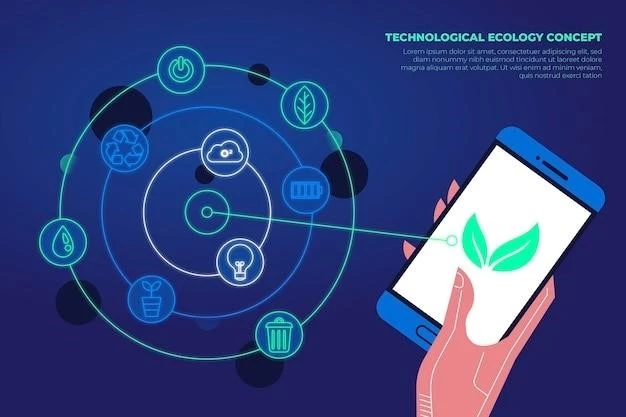Climate change is one of the most pressing issues facing our planet today. The effects of a changing climate are already being felt around the world, from rising sea levels and extreme weather events to changes in agricultural yields and biodiversity loss. To mitigate these effects and build a sustainable future, we need to act now. Technology plays a crucial role in addressing climate change, offering innovative solutions across various sectors.

Renewable Energy: Powering a Sustainable Future
One of the most significant areas where technology is making a difference is in the transition to renewable energy sources. I’ve personally witnessed the impact of solar panels on my own home. By installing them, I’ve reduced my reliance on fossil fuels and lowered my carbon footprint. Beyond solar, wind energy, hydropower, and geothermal energy are also gaining traction; These renewable sources are becoming increasingly cost-effective and efficient, making them viable alternatives to traditional energy sources.

Energy Efficiency: Saving Energy, Reducing Emissions
Technology can also help us use energy more efficiently. Smart grids, for instance, can optimize energy distribution and reduce waste. I’ve personally benefited from smart home technology, which has allowed me to control my energy consumption and reduce my energy bill. Moreover, energy-efficient appliances, LED lighting, and building insulation are all technologies that can significantly reduce energy consumption and greenhouse gas emissions.
Carbon Capture and Storage: Mitigating Emissions
Carbon capture and storage (CCS) technologies are essential for mitigating emissions from existing fossil fuel power plants and industrial processes. These technologies capture carbon dioxide from emissions and store it underground, preventing it from entering the atmosphere. While CCS technology is still under development, it holds great promise for reducing our carbon footprint.
Sustainable Transportation: Shifting Towards Cleaner Mobility
The transportation sector is a major contributor to greenhouse gas emissions. Electric vehicles (EVs) are a crucial part of the solution. I’ve had the opportunity to drive an EV myself, and I was impressed by its performance and environmental friendliness. Additionally, advancements in public transportation, ride-sharing, and cycling infrastructure can further reduce our reliance on personal vehicles and contribute to a more sustainable transportation system.
Climate Monitoring and Adaptation: Understanding and Responding to Change
Technology is also vital for monitoring climate change and adapting to its impacts. Advanced satellites and sensors can provide real-time data on weather patterns, sea levels, and other climate indicators. This data is crucial for understanding the changing climate and developing strategies for adaptation. Furthermore, technologies like drought-resistant crops and flood control systems can help communities adapt to the challenges posed by climate change.
Conclusion: Embracing Technological Solutions for a Sustainable Future
Technology offers a powerful set of tools for addressing climate change. By investing in renewable energy, energy efficiency, carbon capture and storage, sustainable transportation, and climate monitoring and adaptation, we can create a more sustainable future for ourselves and future generations. It’s crucial to remember that technology is not a silver bullet, but a vital tool that can help us achieve the ambitious goals needed to combat climate change. By embracing these technological solutions and collaborating across sectors, we can build a cleaner, more resilient, and sustainable world.










